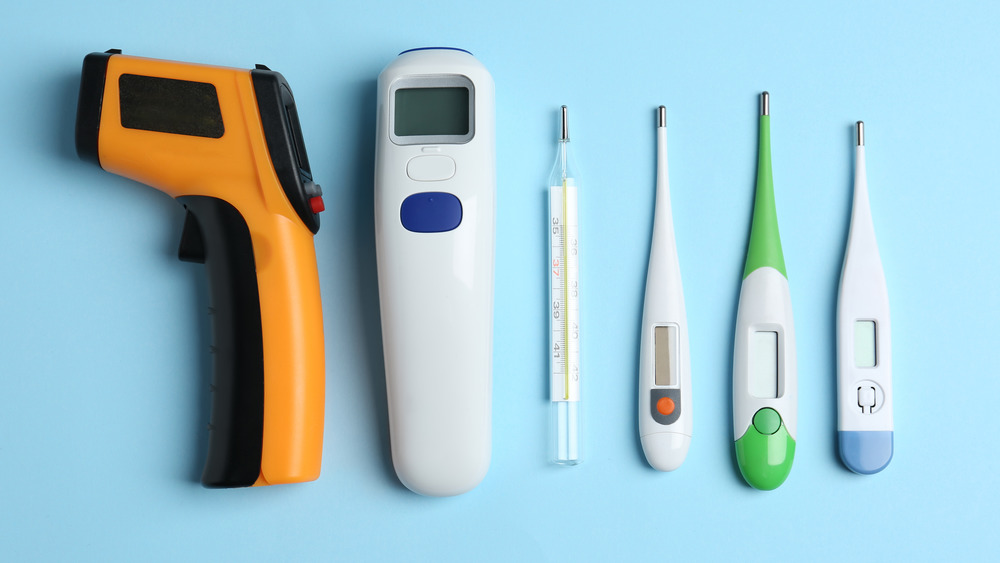The Best Way To Take Your Temperature
Have you ever walked down the "sick" aisle in a pharmacy and become overwhelmed by the vast array of cold medicines, most claiming to have the same benefits? You probably stood there for far too long, ultimately settling for whatever was in front of you. If you thought diversity in products was reserved only for medications, you're wrong. Thermometers have become the latest target. There are digital, oral, axillary, infrared, contactless, temporal artery, tympanic, forehead strip, mercury, and pacifier thermometers, just to name a few (via Healthline). So with all of these options, which is really the most accurate way to measure body temperature?
Let's start with a simple review of what constitutes normal body temperature. Normal body temperature ranges between 97.5 and 98.9 F (via Johns Hopkins Medicine). In the adult population, a temperature of 100.4F or higher is considered a fever, while in children the definition becomes a bit more complicated. Determining fever in a child is dependent on the age of the child as well as the mode in which the temperature is taken, and should be discussed with your child's pediatrician.
Regardless of age, a rectal temperature remains the most accurate method of measuring body temperature (via Cleveland Clinic). While recommended as the primary means of recording body temperature in children under three years old, obtaining a rectal temperature in adults is much less practical. For that reason, it is important to understand how to interpret other thermometer readings accurately.
Digital thermometers are the most accurate method
Digital thermometers tend to be the quickest, most versatile, and cheapest method to measure body temperature. They can be used to obtain oral, axillary, or rectal temperatures, although it is not recommended to use the same thermometer for more than one route. Following a rectal reading, oral readings are the most reliable and accurate. Following each specific thermometer's instruction, a clean digital thermometer should be placed under the tongue for the necessary amount of time. The oral reading obtained tends to run ½ to 1 degree cooler than a rectal reading. If you place the thermometer under your armpit to obtain an axillary temperature, the reading will run about ½ to 1 degree cooler than an oral reading, or 1 to 2 degrees cooler than a rectal reading, per Healthline.
If conventional thermometers aren't up your alley, try an infrared temporal thermometer. Quickly gaining popularity, these thermometers use infrared sensors to measure the temperature of the temporal artery, located on either side of your forehead. It is important to read the accompanying directions carefully, to obtain the most accurate reading. Temperature readings from these types of thermometers tend to run one degree cooler than oral readings or two degrees cooler than rectal readings.
Regardless of the method you use to obtain a temperature reading, always be sure to correlate it with your symptoms and contact your medical provider when necessary.


